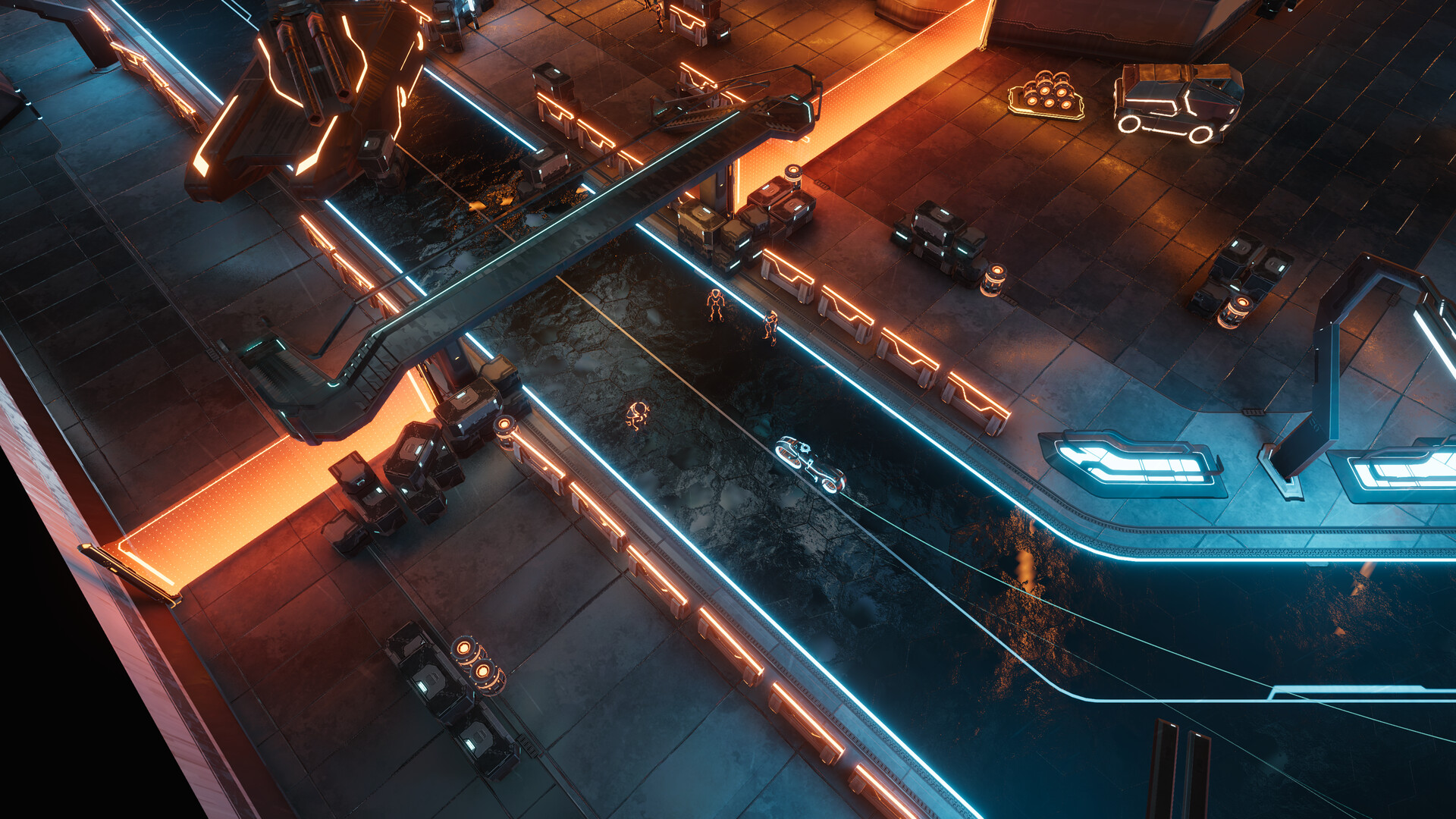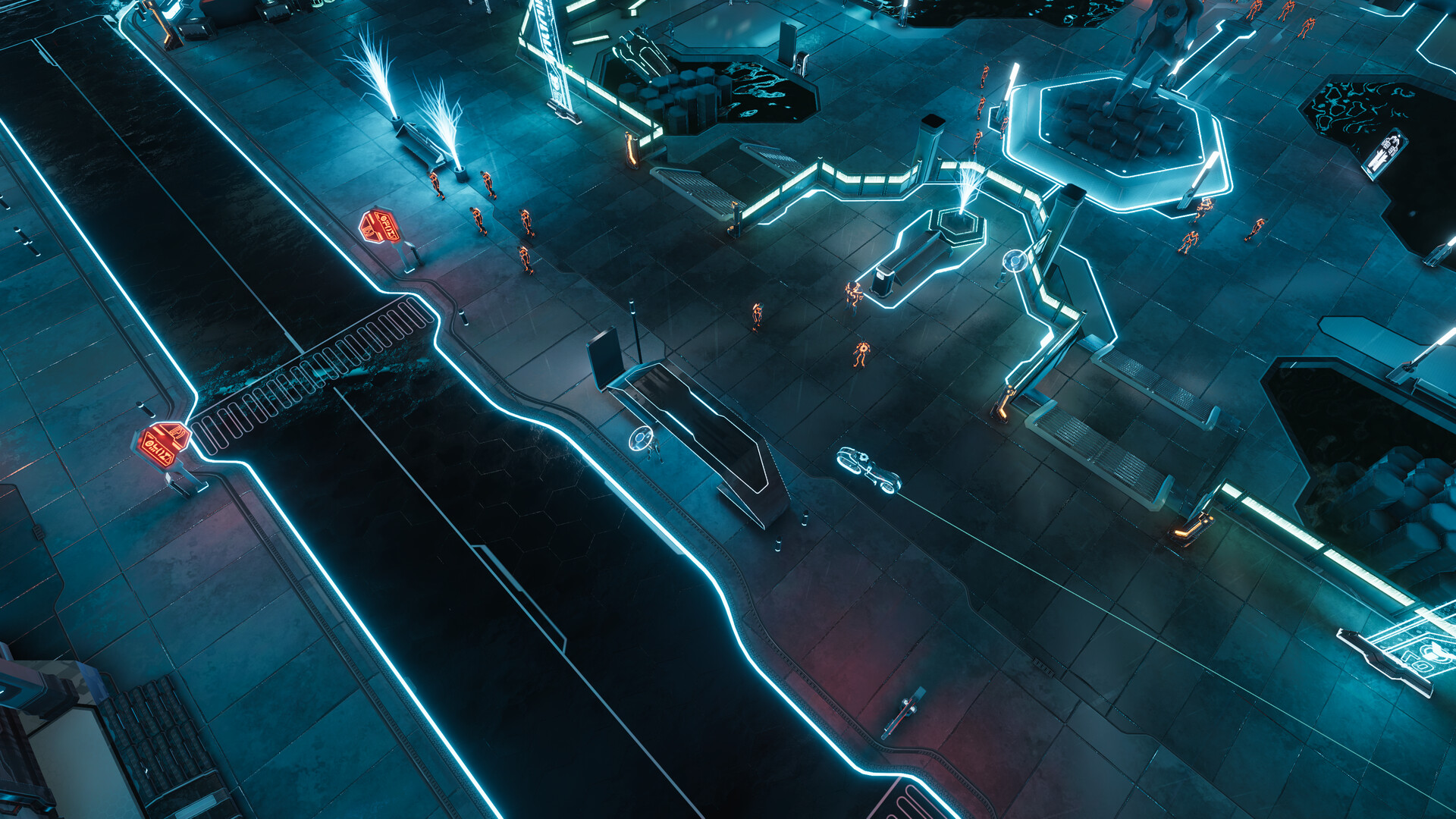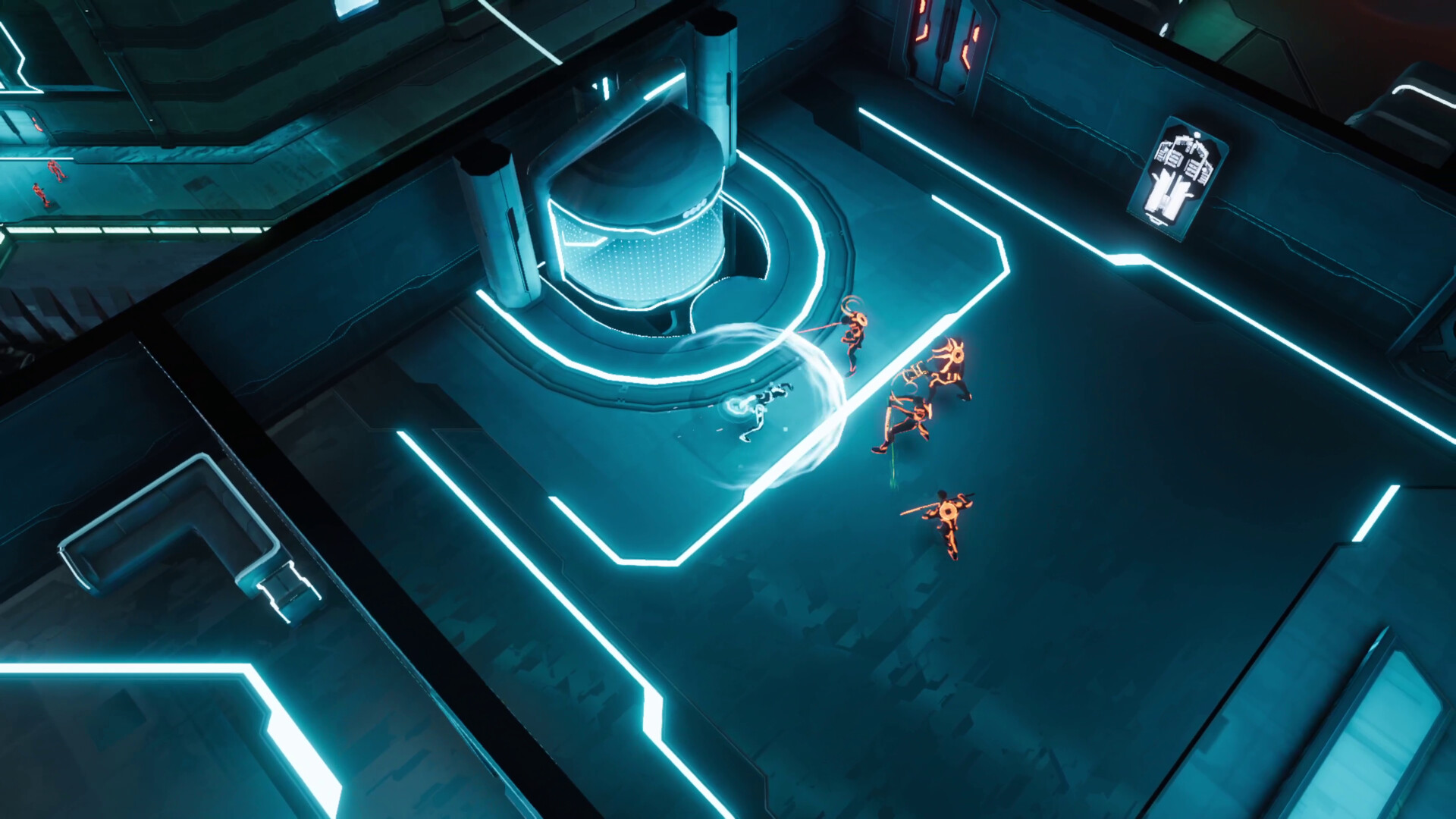Advertisement
Popular Now
TRON: Catalyst, developed by Bithell Games and released on June 17, 2025, promised an electrifying return to Disney’s iconic TRON universe. Set in the Arq Grid, the game introduces Exo, a courier program who gains the ability to manipulate time through a "Glitch" power, allowing her to loop back and replay moments. This time loop mechanic, central to both narrative and gameplay, held immense potential to redefine the isometric action-adventure genre. However, despite its ambitious premise, the mechanic feels underutilized, constrained by linear design and excessive hand-holding. This article delves deeply into the specific issue of the time loop’s implementation, exploring its conceptual promise, execution flaws, and missed opportunities across the game’s development and reception.




The Conceptual Promise of the Time Loop

A Narrative Fit for TRON
The time loop mechanic in TRON: Catalyst is a natural fit for the TRON universe, where programs and digital systems operate in cycles and iterations. Exo’s Glitch power, triggered by a mysterious explosion, allows her to rewind time to the start of a chapter, retaining knowledge and items. This concept aligns with the franchise’s themes of corrupted code and systemic instability, offering a fresh take on the Arq Grid’s crumbling society. The narrative setup suggests a dynamic interplay between player agency and story progression, where Exo’s ability to manipulate time could unravel the political struggles between factions like Core and Automata.Inspirations from Other Time Loop Games
The time loop draws inspiration from acclaimed titles like Deathloop and Hades, which use repetition to empower players through experimentation and mastery. In Deathloop, players exploit time loops to uncover secrets and plan assassinations, while Hades integrates loops into its roguelite structure, rewarding persistence with progression. TRON: Catalyst’s early previews hinted at a similar ambition, with developers promising a mechanic that would let players “outsmart and outmaneuver” opponents using foreknowledge. However, the final product falls short of these aspirations, lacking the depth and freedom of its predecessors.Early Implementation: A Strong Start
Tutorial and Initial Loops
In the game’s opening chapters, the time loop mechanic shines. The tutorial introduces Exo’s arrest and imprisonment in a Disc Wars arena, where she uses her Glitch power to escape by looping back to avoid capture. These early loops are tightly scripted, guiding players through a sequence of events that demonstrate the mechanic’s potential. For example, obtaining a key in one loop unlocks a previously inaccessible area in the next, creating a satisfying sense of progression. The voice acting, particularly for Exo and antagonist Conn, enhances these moments, making the narrative feel alive.Player Engagement in Chapter One
The first chapter’s loop structure engages players by requiring them to gather information and make strategic decisions. For instance, Exo must navigate a heavily guarded checkpoint, using knowledge from previous loops to bypass security. This early implementation feels intuitive, as the game balances guidance with player agency. However, even here, subtle signs of over-direction emerge, with objectives clearly spelled out, limiting opportunities for creative problem-solving.Mid-Game Stagnation: Repetition Sets In

Linear Loop Triggers
By the mid-game, the time loop mechanic begins to falter. Loops become less about player-driven experimentation and more about hitting specific story beats. Unlike Deathloop, where players can freely manipulate time to explore alternative paths, TRON: Catalyst restricts loop resets to predetermined moments, often triggered automatically when objectives are inaccessible. This linearity undermines the mechanic’s potential, turning it into a glorified checkpoint system rather than a tool for innovation.Repetitive Objectives
The mid-game’s objectives exacerbate this issue, with loops often requiring players to backtrack through familiar areas to collect items or interact with NPCs. For example, one chapter tasks Exo with retrieving data from a broker, only to reveal that the broker requires a specific item obtainable only by restarting the loop. These tasks feel repetitive, as the game fails to introduce new challenges or surprises within each cycle. The lack of meaningful variation makes loops feel like busywork, diminishing player engagement.Combat Integration: A Missed Synergy
Time Loops and Combat Mechanics
Combat in TRON: Catalyst, centered on Identity Disc attacks and Light Cycle chases, is functional but lacks synergy with the time loop mechanic. Players can melee, throw discs, dodge, and parry, with upgrades like multi-enemy disc bounces adding flair. However, loops rarely influence combat strategies. Unlike Hades, where each run introduces new boons that alter playstyles, TRON: Catalyst’s loops retain the same combat scenarios, with no opportunity to experiment with new tactics or abilities gained through foreknowledge.Enemy AI Limitations
Enemy AI further hampers combat-loop integration. Enemies often get stuck in scenery or fail to react dynamically, reducing the need for strategic loop manipulation. For instance, players can exploit static enemy positions to bypass encounters entirely, rendering loops unnecessary. This lack of challenge undermines the mechanic’s purpose, as players rarely need to retry scenarios to overcome difficult foes. A more dynamic AI could have forced players to use loops creatively, such as memorizing patrol patterns or timing attacks.Exploration and World Design: Limited Incentives
Semi-Open Environments
The Arq Grid’s semi-open levels, from neon-lit city streets to glitch-ridden wastelands, are visually stunning but offer little incentive for exploration within loops. Unlike Dishonored, where multi-path environments reward creative navigation, TRON: Catalyst’s levels feel homogeneous, with side paths leading only to currency for upgrades. Since the main quest provides ample currency, players have little reason to revisit areas in new loops, reducing the mechanic’s impact on world interaction.Underutilized Light Cycle
The Light Cycle, a TRON staple, is a highlight when used for traversal or combat, but its integration with loops is minimal. Players can summon Light Cycles in open areas, but opportunities to use them strategically in loops—such as creating Light Walls to block enemies in one cycle for an advantage in the next—are absent. This oversight limits the mechanic’s versatility, as the Light Cycle remains a superficial addition rather than a core component of loop-based gameplay.Narrative Disconnect: Story vs. Mechanic

Promising Setup, Flat Execution
The time loop’s narrative promise—Exo’s quest to prevent a Glitch Storm and unite factions—is compelling but poorly executed. The story assumes familiarity with TRON: Identity, introducing characters like Sierra and Vega without sufficient context. While the writing and voice acting are strong, the loop mechanic feels detached from the narrative’s progression. Key plot points, like Exo’s interactions with Conn, unfold linearly, with loops serving as mere resets rather than tools for shaping the story’s outcome.Missed Opportunities for Branching Paths
The game could have leveraged loops to create branching narratives, allowing players to influence faction dynamics or alter Exo’s relationships through repeated cycles. For example, choosing to ally with Automata or Reset in one loop could unlock unique dialogue or missions in the next. Instead, the story remains fixed, with loops acting as a narrative crutch rather than a catalyst for player-driven storytelling. This disconnect weakens the mechanic’s thematic resonance.Technical Issues: Autosave and Loop Conflicts
Autosave Restrictions
A significant technical flaw is the autosave system, which restricts player control over loop progression. Unlike manual save systems that allow players to experiment freely, TRON: Catalyst’s autosave ties progress to specific checkpoints, sometimes resetting loops unexpectedly. In the review build, completing the game reportedly erased progress entirely, a bug that highlights the system’s fragility. This lack of flexibility frustrates players, as they cannot save mid-loop to test different approaches.Impact on Player Freedom
The autosave issue compounds the mechanic’s linearity, as players are locked into predetermined loop cycles without the ability to backtrack or experiment. This rigidity contrasts with games like Outer Wilds, where players can freely explore within a time loop, learning through trial and error. A more robust save system could have empowered players to engage with the mechanic creatively, enhancing its replayability and depth.Community and Reviewer Feedback: A Common Critique
Critical Reception
Reviewers have consistently highlighted the time loop’s underutilization as a core issue. IGN notes that the mechanic “doesn’t offer enough opportunities to exploit foreknowledge,” while GamesRadar+ laments its evolution into “tedious repetition” in later chapters. OpenCritic’s 68/100 score reflects this sentiment, with only 40% of critics recommending the game due to its unrealized potential. These critiques underscore a consensus that the mechanic fails to deliver on its promise.Player Sentiment on X
Posts on X echo reviewer concerns, with users like @playswave_com criticizing the “excessive hand-holding” and “repetitive objectives” that undermine the loop mechanic. Fans of the TRON franchise appreciate the aesthetic and narrative but express disappointment over the mechanic’s lack of depth. This feedback suggests that the issue resonates widely, impacting both casual players and dedicated TRON enthusiasts.Comparison to TRON: Identity: A Step Backward?

Visual Novel vs. Action-Adventure
TRON: Catalyst’s shift from TRON: Identity’s visual novel format to an action-adventure game was ambitious but diluted the time loop’s impact. TRON: Identity used its narrative-driven structure to weave player choices into a cohesive mystery, whereas Catalyst struggles to balance action and story. The loop mechanic, which could have bridged these elements, feels like an afterthought compared to Identity’s focused storytelling.Lessons Unlearned
Bithell Games’ experience with TRON: Identity should have informed a more robust implementation of the loop mechanic. The visual novel’s success lay in its player-driven decisions, a quality Catalyst lacks. By prioritizing action over interactivity, the game sacrifices the depth that made its predecessor compelling, raising questions about the studio’s design priorities.Future Potential: How to Fix the Time Loop
Enhancing Player Agency
To salvage the time loop mechanic, future patches or sequels could emphasize player agency. Allowing players to trigger loops at will, experiment with combat strategies, or influence narrative outcomes would align the mechanic with its conceptual promise. For example, introducing “loop-specific” abilities—like temporary buffs gained in one cycle—could encourage creative problem-solving.Expanding Exploration and Combat
Integrating loops with exploration and combat is another solution. Dynamic enemy AI that adapts to player actions across loops, or environmental puzzles that require multiple cycles to solve, would add depth. Additionally, expanding the Light Cycle’s role in loop-based challenges, such as timed races or tactical blockades, could make the mechanic more versatile.Potential Improvements:
- Dynamic Objectives: Introduce varied objectives within loops to reduce repetition.
- Branching Paths: Allow player choices in loops to impact faction dynamics or story outcomes.
- Manual Saves: Implement a save system to enable mid-loop experimentation.
- Enhanced AI: Develop adaptive enemy behaviors to challenge players across cycles.
















